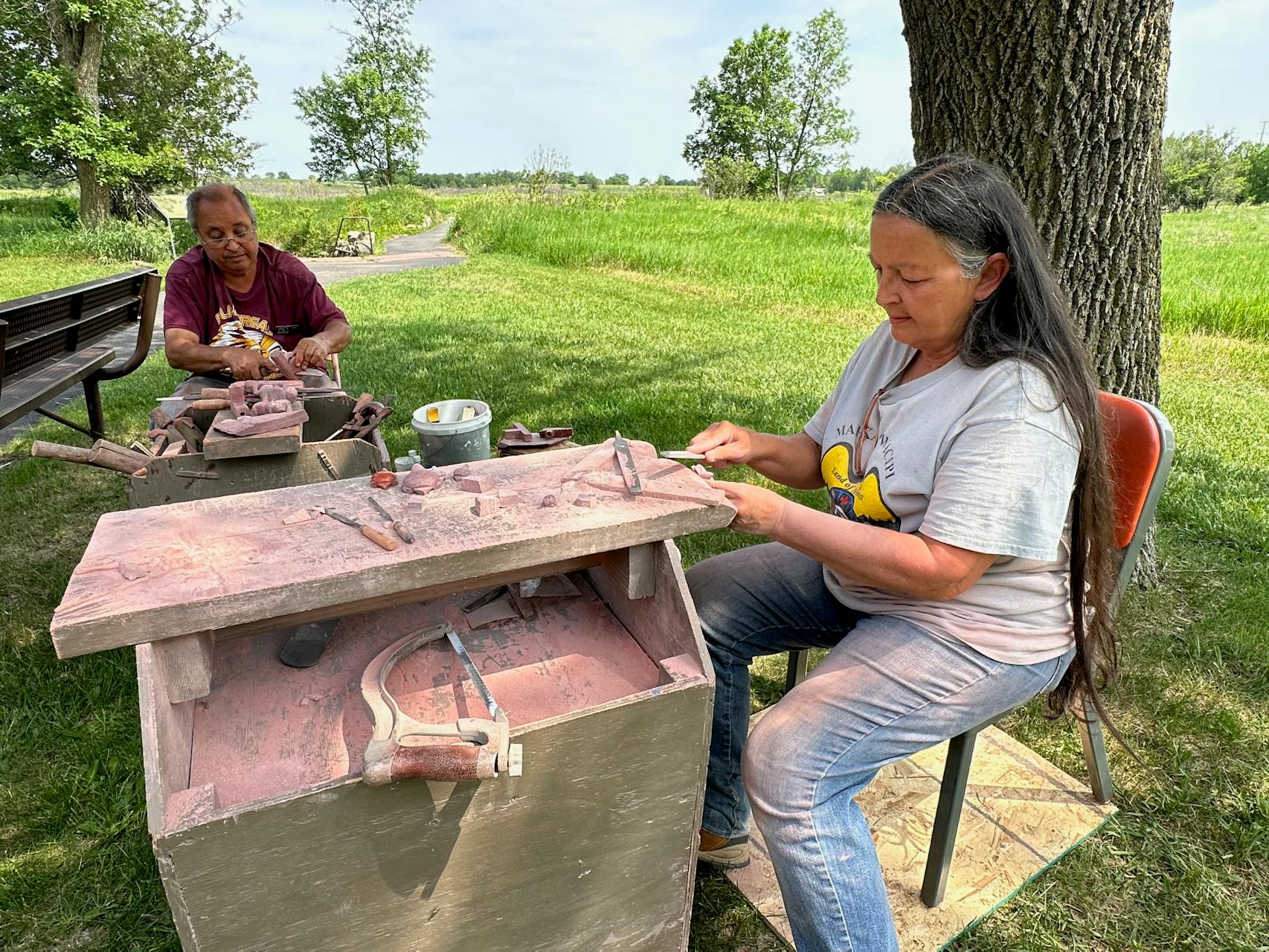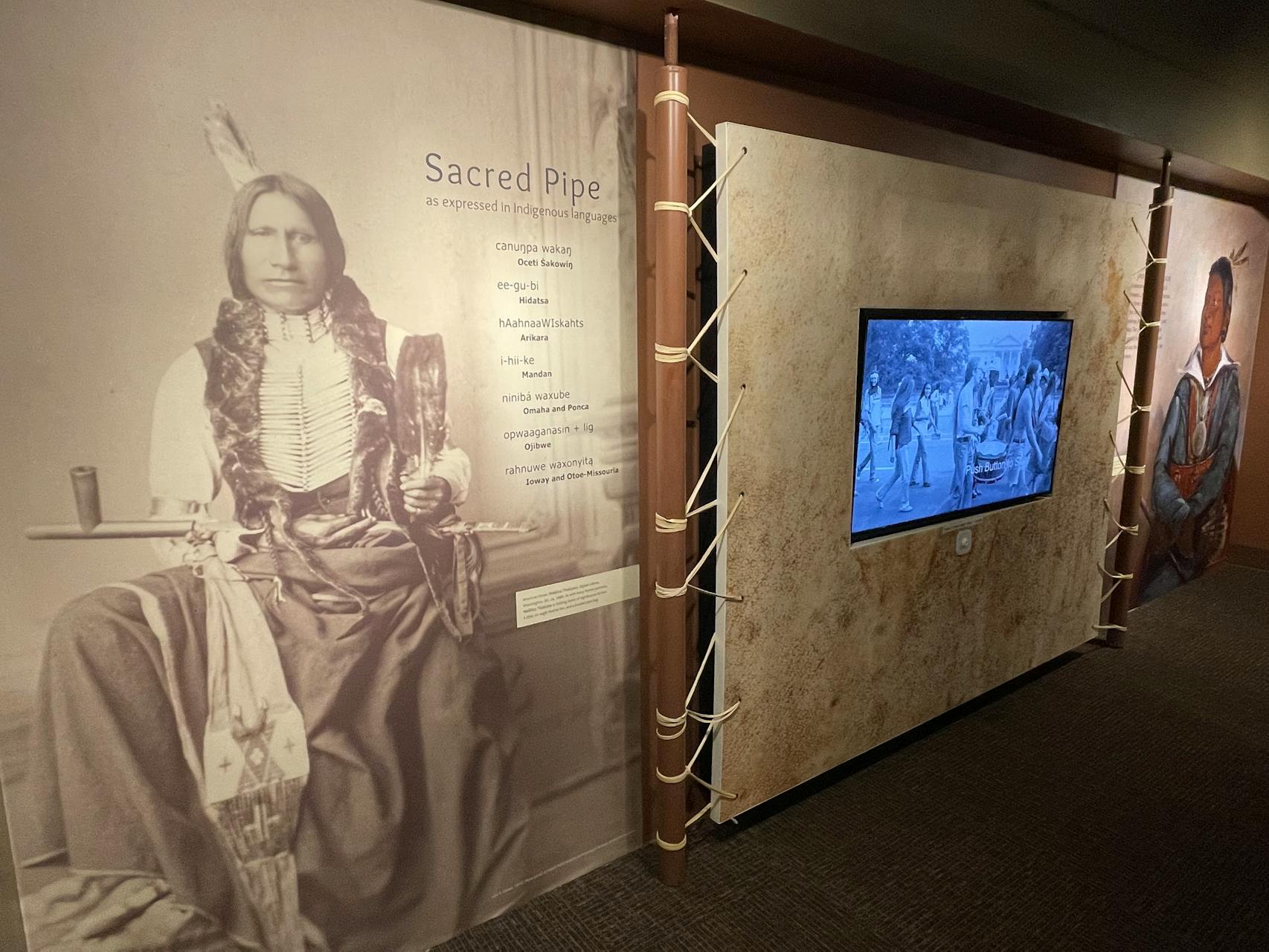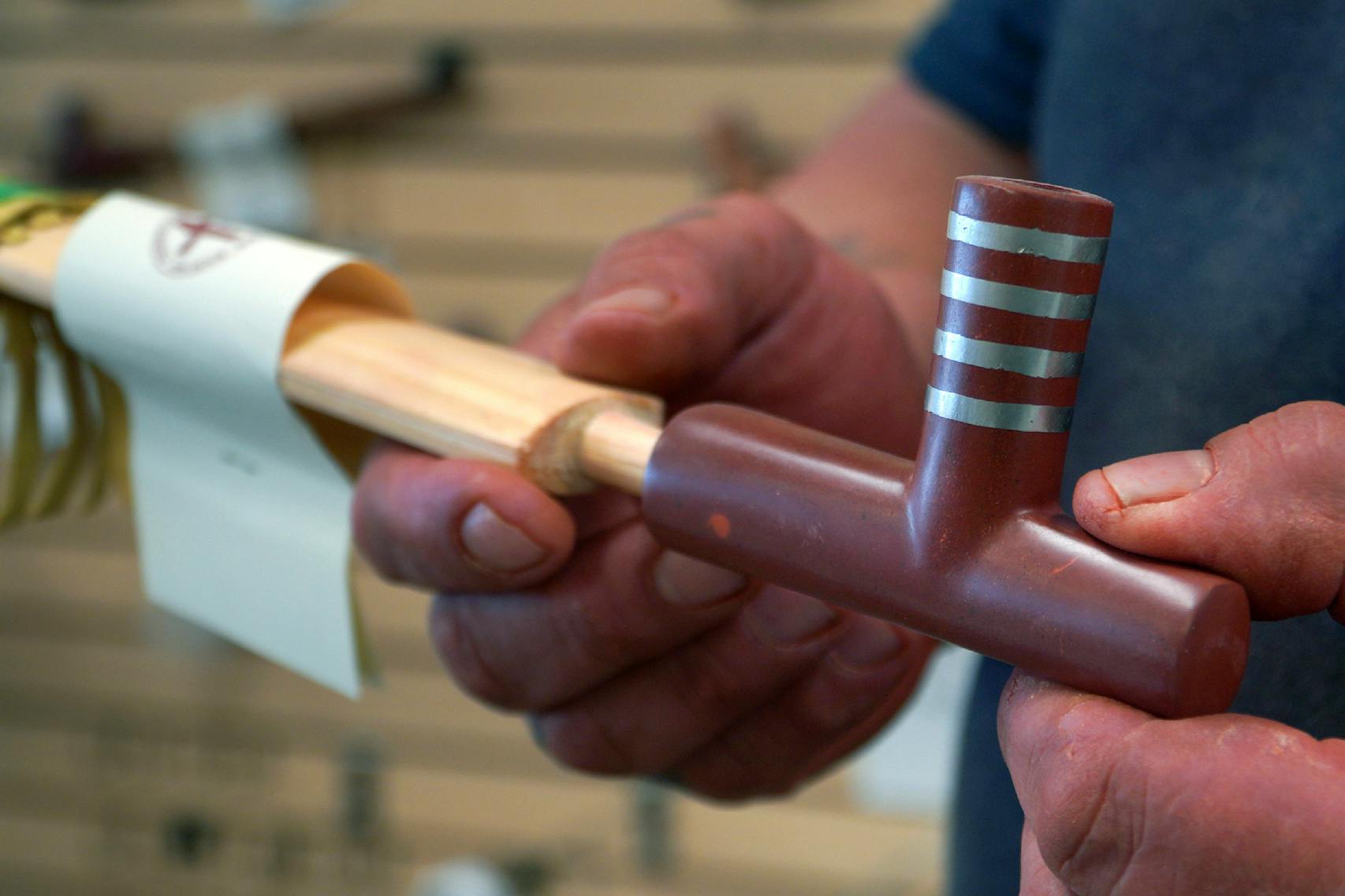Pipestone National Monument retells its story from a Native perspective
A weak breeze nudges the thick summer air that settles across southwestern Minnesota's prairie. The staccato calls of grassland birds mix with the gritty rasp of metal files and sandpaper as Mark and Cindy Pederson sit in the shade, shaping and carving pipestone.
Eagle claws, turtles and bison made from the soft, reddish stone — quarried from the earth beneath them — mingle on a table where visitors to Pipestone National Monument stop to admire the brother-sister duo's work. With mauve dust covering their hands and clothing, the siblings happily provide answers to onlookers' questions.
"We enjoy talking to people," says Cindy, who paused to show a young man how beeswax makes the stone shine.
The Pedersons, who are members of the Sisseton-Wahpeton Dakota, regularly demonstrate at the Pipestone visitor center, along with their cousins. Together, they preserve the skills for hand-quarrying the stone and the sacred art of carving it, which stretch back centuries. They're also carrying forward a family tradition that began when their great-grandparents Moses Crow and Estelle Crow-Wilson moved to the Pipestone, Minn., area in 1927 to work the revered stone.
Cindy started carving pipestone at age 5 after watching her grandparents. By the time she was 13, her Aunt Betty taught her how to create a turtle, which represents long life, fertility and protection. The segments on their shells also represent the 13-moon lunar calendar.
Mark has carved close to 1,000 bison pipes over the years, but his specialty is an eagle claw. He and his sister may use modern metal tools and an array of sandpaper, but they're also quick to demonstrate an ancient pump drill or simple stone tools that long-ago ancestors may have used.
Inside the visitor center, Mark points at black-and-white photos of men in the quarries or carving.
"That's my grandfather and my great-uncle," he says with pride.
Tribal input influences exhibits
The generational and spiritual connections to Pipestone have been re-emphasized since 2020, when the national monument — one of six National Park Service sites in Minnesota — quietly replaced its original 1953 exhibits in the visitor center.
Travelers no longer learn about pipestone through the colonial viewpoint. Gone are the 1830s paintings of villages and references to pipestone as "catlinite," named for artist and explorer George Catlin who, despite tribal objections, insisted on seeing the quarries and sending pipestone samples to Boston for analysis.
Pipes, once displayed like artifacts and sold as souvenirs rather than religious objects, are scant and shown in two pieces: the bowl and the stem. To have them connected is to be ready for prayers.
"What changed was the perspective," said Gabrielle Drapeau, park ranger and member of the Yankton Sioux Tribe. Staff members worked with 23 affiliated tribes for almost a decade to develop the new exhibits — part of an ongoing Park Service effort to include more Native narratives.
The new exhibits play the sounds of hammers in the quarries and let visitors lift a bucket of rock to sample the strength needed to excavate 13 to 15 feet of hard quartzite before reaching the soft pipestone. Families who quarry the pipestone talk about the arduous process, in which only hand tools are allowed.
The gift shop has sharpened its focus on Indigenous artists and products, such as pipestone effigies, books, star quilts, herbal seasonings and ledger art, a Native art form that consists of pictorial stories drawn on late-1800s accounting book pages. Scenes of courtship, families and life on the plains cover up much of the ledgers' numbers and names that tracked Indigenous families forced onto reservations or into boarding schools that sought to erase their culture.
A visitor handout offers tips for interacting respectfully with Native Americans and avoiding cultural blunders. It coaches people to "be open to the fact that someone's oral tradition or knowledge may not align with what you have been taught."
Carrying prayers
Minnesota's pipestone has been found in prehistoric sites across the country, having been traded and carried by foot long before Europeans sailed to North America. People who visited the quarries knew to lay down weapons and to treat the site as a sacred place of peace, much like a church cathedral would be, Drapeau said.
For her, pipestone holds an even greater importance as it ties to her tribe's creation story.
"A long time ago, there was a flood in this area," she explained. "It killed a lot of our people, and their blood seeped down into the stone and turned it red. We call pipestone 'the blood of our people.' It's like we're almost related to the stone directly."
The Creator took a piece of the stone and formed a pipe. Used with sacred plants such as tobacco, sweetgrass and cedar, the pipe's smoke would carry their prayers skyward.
"Pipestone is like our direct line to the Creator," Drapeau said.
Prairie pilgrimage
Outside the visitor center, a three-quarter-mile Circle Trail winds through tallgrass prairie, past wild roses, plums and blazing stars. A sign draws attention to a distant cottonwood tree where members from the Seven Council Fires of the Dakota, Nakota and Lakota gather during the hottest part of the summer for a four-day Sun Dance, a spiritual ceremony.
The trail follows towering formations of quartzite where shade deepens its rosy layers. Mist from Pipestone Creek's tumbling Winnewissa Falls can offer a cool reprieve. Another trail heads past 56 hand-dug quarry pits. They're rimmed with piles of quartzite stones, painstakingly excavated.
"It's even hotter down here," says Mark Pederson as he grabs a rope and carefully descends into a quarry his family has been excavating for 50 years. He hammers metal wedges into cracks and shows a sample of pipestone, which stands out as a red vein compressed beneath 15 feet of mauve quartzite with a hint of purple. He then breaks those pieces into small enough chunks to haul up in a bucket.
Anyone enrolled in one of the country's more than 500 tribal nations can apply for a quarry permit, but it may take years of waiting. It may take several more years of vacation time and the help of several people to hammer, chisel and dig their way to the pipestone. A few short-term quarries do allow people to spend a day, a week or month working in a quarry without needing a yearlong permit for what can become a sort of pilgrimage.
The Pedersons, both in their mid-60s, can't imagine another vocation as meaningful as being the fourth generation of their family to quarry and carve at Pipestone, and to help visitors understand this sacred stone beneath the prairie.
"It is our life," says Cindy Pederson. "This is what we were born to do."
Lisa Meyers McClintick (instagram.com/minnelisa), author of "Day Trips From the Twin Cities," is based in St. Cloud and has written for the Star Tribune since 2001.
What to do in Pipestone, Minn.
In Pipestone National Monument's neighboring town of Pipestone (pop. 4, 215) — about three hours west of the Twin Cities — you can find more gifts and Indigenous artwork at Prairie Maiden Treasures on Main Street or at Keepers of the Sacred Tradition of Pipemakers, which has a giant pipe on its lawn along Hiawatha Avenue.
Dig into more local history at the Pipestone County Museum or take a walking tour of the Downtown Historic District, built in the late 1880s in Romanesque and Italianate styles using the area's rosy quartzite. Faces or gargoyles can be seen tucked into the stonework.
The Pipestone Family Aquatic Center has a sizable outdoor pool, including a 126-foot flume water slide, for cooling off on hot afternoons.
Where to eat: Grab a salad, chislic (a regional dish of fried cubed beef), sandwiches or steak and dine on the patio at downtown's Stonehouse and Quarry Lounge.
Where to sleep: Besides a few hotels, campers can find full-service sites and an outdoor pool at Pipestone Family Campground or reserve a spot at Split Rock Creek State Park eight miles south of Pipestone.




